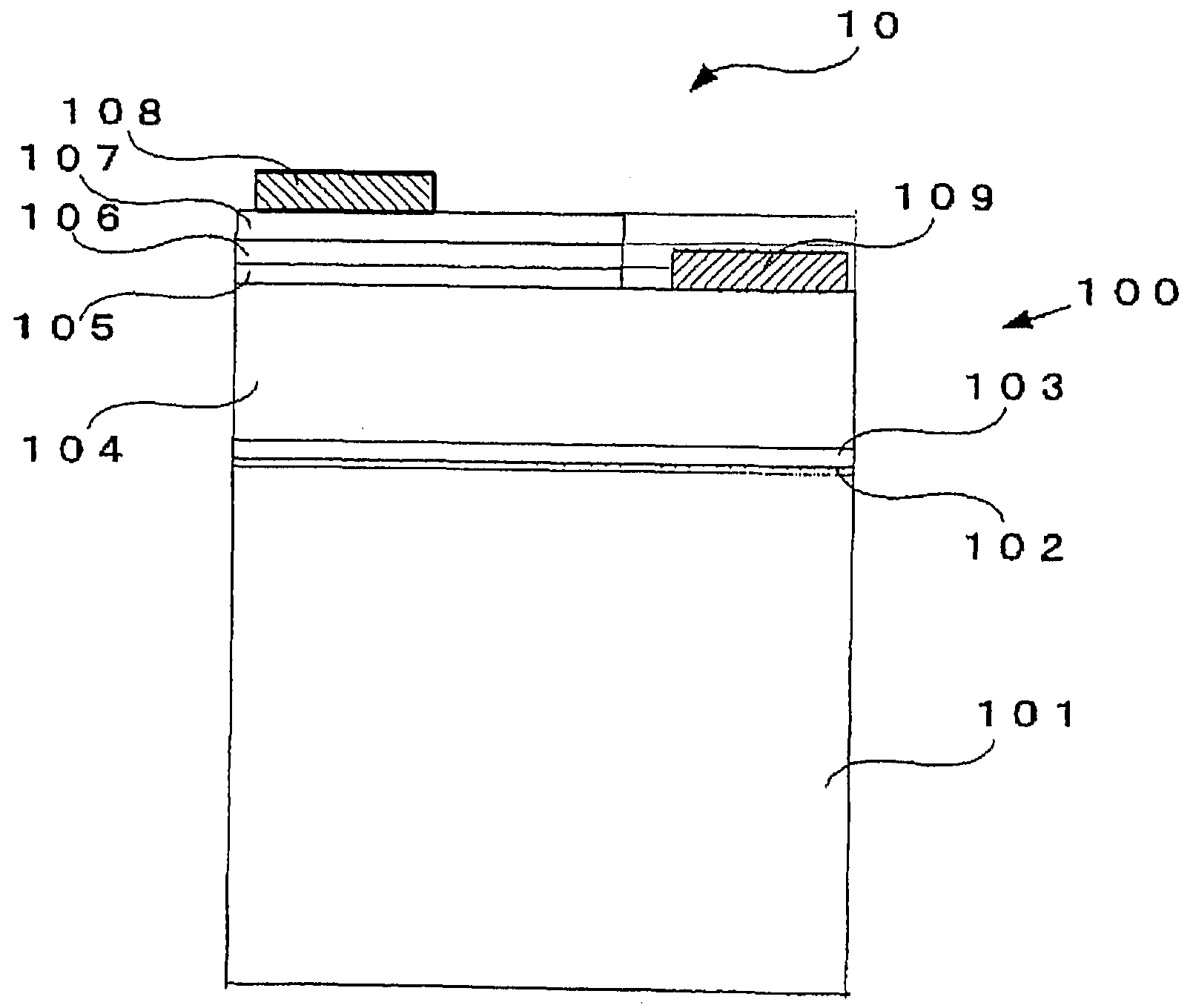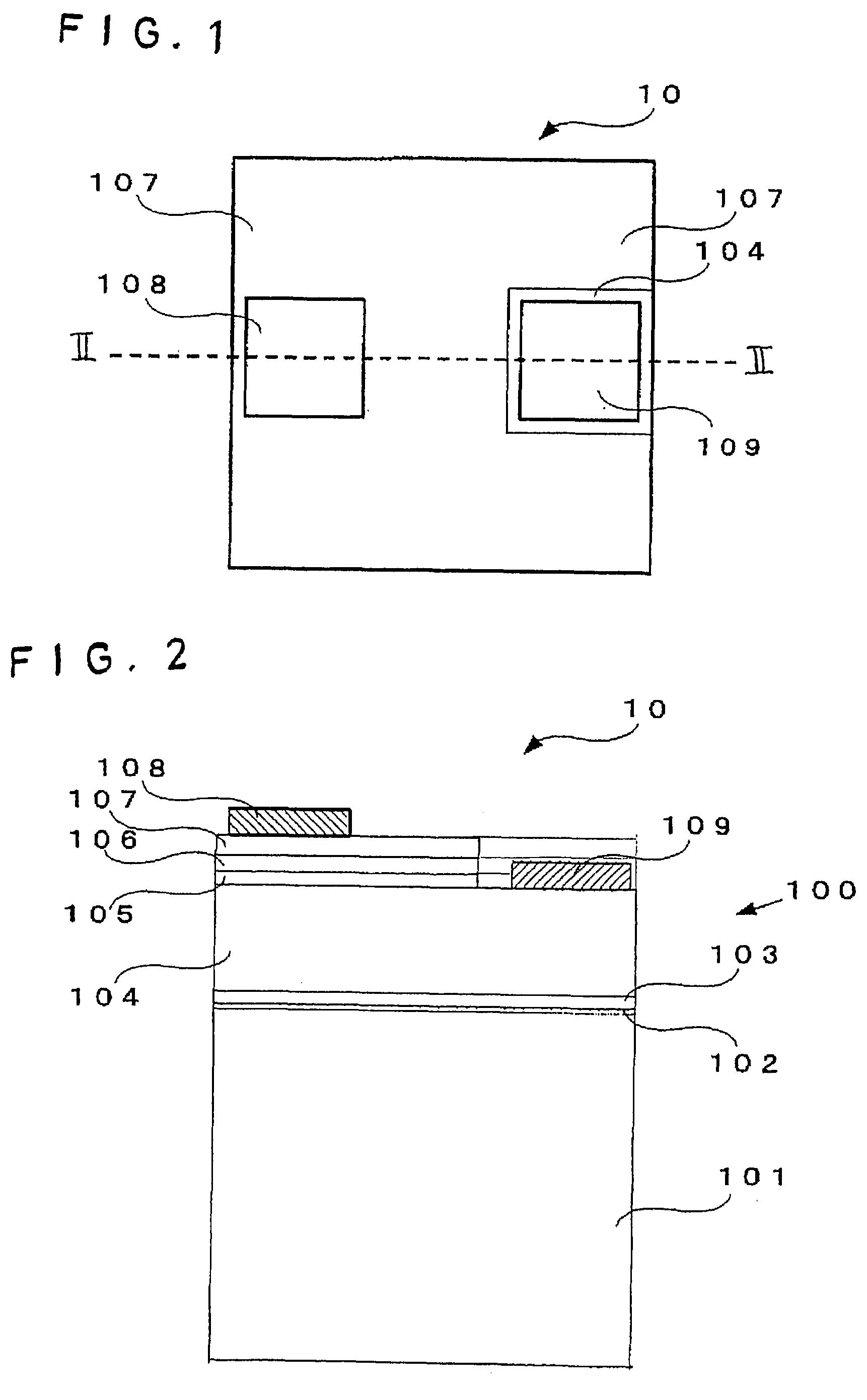Method for fabricating semiconductor layer and light-emitting diode
a technology of light-emitting diodes and semiconductor layers, which is applied in the direction of polycrystalline material growth, chemistry apparatus and processes, crystal growth processes, etc., can solve the problems of unable to produce a gan layer exhibiting good quality, unable to stably form the semiconductor layer, and unable to achieve good quality. gan layer, the effect of reducing density and excellent lattice matching
- Summary
- Abstract
- Description
- Claims
- Application Information
AI Technical Summary
Benefits of technology
Problems solved by technology
Method used
Image
Examples
example 1
[0055]This invention will be specifically described with reference to the case of forming a cubic GaN layer while simultaneously radiating an electron beam on a silicon carbide layer formed on a (001) crystal face constituting the surface of a (001)-silicon single crystal substrate.
[0056]A phosphorus (P)-doped n-type Si single crystal substrate was conveyed at room temperature into the growth chamber of a molecular beam epitaxial (MBE) growth device. The substrate was subsequently heated in a high vacuum of about 1×10−7 Pa to 1050° C. The fact that the heat treatment of the substrate at the high temperature in the high vacuum induced a (2×1) reconstruction structure of a (001) crystal face constituting the surface of the substrate was confirmed by an ordinary reflection high-energy electron diffraction (RHEED).
[0057]Thereafter, the temperature of the silicon single crystal substrate was lowered to 490° C. while the high vacuum was retained constant. After the temperature of the subs...
example 2
[0063]This invention will be specifically described with reference to the case of forming a hexagonal AlGaN layer while simultaneously radiating an electron bean on a silicon carbide layer formed on a (111) crystal face constituting the surface of a (111)-silicon single crystal substrate.
[0064]A boron (B)-doped p-type Si single crystal substrate was conveyed at room temperature into the growth chamber of a molecular beam epitaxial (MBE) growth apparatus. Then, the substrate was heated in a high vacuum of about 1×10−7 Pa to 850° C. The fact that the heat treatment of the substrate at the high temperature in the high vacuum induced a (7×7) reconstruction structure of a (111) crystal face constituting the surface of the substrate was confirmed by an ordinary reflection high-energy electron diffraction (RHEED).
[0065]Thereafter, the temperature of the silicon single crystal substrate was lowered to 490° C. while the high vacuum was retained constant. After the temperature of the substrat...
example 3
[0070]The effect of the present invention will be specifically described with reference to the case of manufacturing a Group III nitride semiconductor light-emitting diode utilizing a GaN layer formed while continuing radiation of electrons as in Example 1.
[0071]FIG. 1 illustrates a schematic planar structure of the light-emitting diode (LED) described in Example 3 and FIG. 2 a schematic sectional structure thereof taken through FIG. 1 along broken line II-II.
[0072]A stacked structure 100 for use in an LED 10 was composed by stacking a cubic (001) silicon carbide layer 102 disposed on the surface of a phosphorus (P)-doped n-type silicon single crystal substrate 101, a cubic GaN layer 103 disposed thereon, a lower clad layer 104 formed of an n-type cubic GaN doped with silicon (Si) by the MBE method, a multiple quantum well structure light-emitting layer 105 formed of a structure resulting from alternately stacking an n-type gallium-indium nitride (Ga0.9In0.1N) mixed crystal layer an...
PUM
| Property | Measurement | Unit |
|---|---|---|
| pressure | aaaaa | aaaaa |
| lattice constant | aaaaa | aaaaa |
| lattice constant | aaaaa | aaaaa |
Abstract
Description
Claims
Application Information
 Login to View More
Login to View More - R&D
- Intellectual Property
- Life Sciences
- Materials
- Tech Scout
- Unparalleled Data Quality
- Higher Quality Content
- 60% Fewer Hallucinations
Browse by: Latest US Patents, China's latest patents, Technical Efficacy Thesaurus, Application Domain, Technology Topic, Popular Technical Reports.
© 2025 PatSnap. All rights reserved.Legal|Privacy policy|Modern Slavery Act Transparency Statement|Sitemap|About US| Contact US: help@patsnap.com


